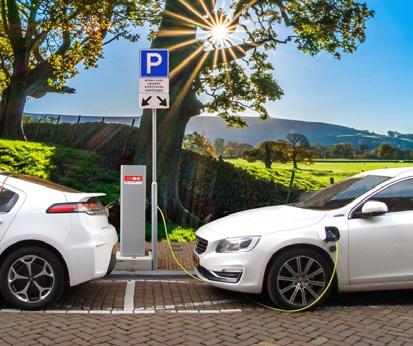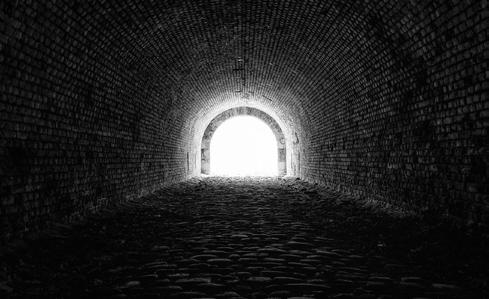
8 minute read
Energy Management
Is there another way to reach your energy reduction target?
With energy usage increasingly becoming a focus for businesses and industry, what else can you do to help you meet your target? The experts at Eco-Max have the answer.
Advertisement
s an on-site property manager, or someone who operationally A runs a big factory or warehouse, the topic of energy reduction is always prevalent. With the government looking to reduce emissions and energy consumption, big businesses are looking at new ways to help them achieve this.
By now, most people who are responsible for the management of premises will have looked at many practices in order to reduce energy costs. LED lighting, for example, is often the first technology that seems a straightforward place to start, as they consume far less energy than their traditional discharge lighting predecessors. Whilst LED lights will make some inroads towards helping you to achieve your energy reduction targets and savings, in many businesses, lighting may only be a small fraction of your overall energy consumption.
There are other products out there that can dramatically reduce your energy consumption, and therefore reduce your energy bill too. One of those products is a voltage optimiser, and here’s how it works.
Did you know that UK electricity provided to every business is supplied at an average voltage of 242 V and can be as high as 253 V? But, as a business, you don’t need all that power as your electrical equipment can work efficiently at 220 V. Basically, any power supplied over this voltage is wasting energy, which you are needlessly paying for. That is where a voltage optimiser comes in.
Whichever way you look at it, installing a voltage optimiser in your building or office will dramatically reduce your energy consumption, and therefore help a business achieve its energy target. A voltage optimiser can reduce the energy consumed by your equipment across site by up to 19%, which can help a business not only reduce the amount of energy it uses, but also reduce its energy bill.
Businesses which rely on electrical equipment or machines that are consistently switched on to carry out production are the ones that will most benefit. And let’s be honest, that is the majority of UK businesses.
There are other benefits too The over supply of electricity to your equipment can also reduce its life by nearly half – 45%, according to the British Standard Wiring Regulations. So, whether your business is office-based or industrial, the over supply of electricity can lead to a piece of equipment failing much earlier than needed.
Wayne Cramer, MD of GWE, explains, “Whilst we have tens of thousands of voltage optimisers installed across the UK, it still seems to be the energy sector’s best kept secret, and we regularly see it help businesses reduce their energy consumption by around 10%.
“Why wouldn’t you want to fit one to help a business reach its energy target? We’ve been going 26 years and in that time I’ve had plenty a facility or energy manager ask me how we can help them hit their energy efficiency targets. This is now getting more difficult to achieve for many of them as they may already have done the LED lighting and other technologies, but it’s no less of a focus for all business owners and managers.
“My answer has always been, and still is, a voltage optimiser. Fitting one, even after you have done all the other energy efficiency measures you can think of, is even known to exceed your annual energy reduction target in one go. Once fitted you don’t need to think about it, it just gets on with helping you achieve your energy goals year on year.”
Lots of well-known businesses have already turned to voltage optimisers to ensure they are as energy efficient as they can be. Kelloggs, Betfred and the National Trust have all installed voltage optimisers to help hit their energy targets across their businesses and become more energy efficient.

You haven’t had an accident so you must be doing it right. Right? Wrong!
There are many pitfalls associated with emergency lighting, which is why it’s so important to get things right. Vertiv explains how.

ngineers the world over seldom get praise for making our E world a better, more comfortable and safer place to live. But as sure as night follows day, when something goes wrong with one of their creations, the public and the legislators are quick to blame and keen to prevent a reoccurrence. But it was not always so.
In the 1900s, cinemas were the main source of entertainment for the British public, with exciting new and extravagant Cinemas being opened regularly throughout the country, with auditoriums capable of holding over 3,000 people. Cinema audiences rose from 19 million a week in 1939 to 30 million a week by 1945.
As grand as many of these building were, safety was not always taken into consideration. On New Years Eve 1929, the Glen Cinema in Paisley was engulfed in smoke and due to a lack of safety considerations, 69 children lost their lives.
Emergency lighting as a weak link The point is that nobody intentionally sets out to make a disaster, but when they happen, they force a new way of behaviour enshrined in legislation. This is where so many of our world-renowned British Standards have come from and why adherence is critical to prevent future unnecessary mass loss of life.
Take these three British Standards regarding emergency lighting: • BS 5266-1:2016 Code of practice for the emergency lighting of premises. • BS EN 60598-2-22 British and European standard for emergency luminaires. • BS EN 1838: 2013 British and European standard for Lighting Applications – Emergency Lighting • BS 5499-10: 2014 Guidance for the selection and use of safety signs and fire safety notices. • Regulatory Reform (Fire Safety) Order 2005 (RRFSO) - Requires a responsible person, such as the employer, owner, occupier or managing agent in non-domestic premises, to ensure the fire safety of all employees and that premises are safe for any other person who may be on site or in the vicinity, e.g. visitors to a public building This may seem like a small topic on the face of it, but it is the weakest link in any facility when an event requires evacuation, like a fire or gas explosion. This is highlighted in a recent incident at a London hotel. It is people, not the building systems, that always make the headlines.
No trial = error What we can learn from instances like this is what the title of this article suggests, just because you haven’t had that accident, does not mean that you are prepared.
Some may think why do I need to comply with the British Standards? What is the point? We only need to look back to 2017 and Grenfell to answer those questions.
The 2016 upgrade to that building did not meet the requirements of the British Standards, in particular the cladding, resulting in the death of 72 people.
There was also a case in Aberdeen Market recently where the owners were find £80,000 following the death of a pensioner who had fallen down a stairwell which had inadequate emergency lighting.
With emergency lighting, the consequences are a lot more serious than pure financial loss and reputation for the facility owner. Personal fines and custodial sentences for everyone in the chain of negligence are considered appropriate.
“If you think safety is expensive… …try an Accident” goes the old adage, attributed to many in the business of providing services like air travel with huge downside risk to skimping on safety.
Those who own or are responsible for running facilities where emergency lighting is mandated are in the same position. They approach health and safety with the best of intents and purpose, however sometimes you simply do not know what you do not know. It is hard to be an expert in every aspect of the facility. There are options to fill that knowledge gap.
It’s easy to make good decisions when there are no bad options And that’s part of the problem. There are bad options and bad actors. Taking the latter first, there are emergency lighting solutions on the market that are not compliant. But how can you tell upfront? And then there is the question of what system suits your facility?
Self-contained systems are cost-effective for smaller facilities, but what if that facility grows, are they scalable and cost-effective then? Centralised systems claim to have a lower total cost of ownership (TCO) but does that really stack up and from what size facility?
What about UPS Systems, where do these fit in the equation? And then there’s the requirement of testing, automated versus manual. Which is right for you?
Many options to choose from, many wrong decisions to make.
Ignorance is not bliss Standards change but compliance doesn’t so the idea of fit-and-forget is not fit for purpose and economising on standards is a false economy. You need to be compliant, which is why you turn to an expert to give you that added support and confidence.
Since 1993, Vertiv has been a leading UK supplier of certified compliant emergency lighting, and other life-critical systems such as PA systems, fire lifts and smoke diversion systems. You’ll find our systems in airports, rail networks, cinemas and retail and local authority facilities.
Take Action To understand what system suits your needs, join our upcoming webcast Emergency Lighting Made Easy where our technical experts we will demystify how best to deploy or upgrade your system.








